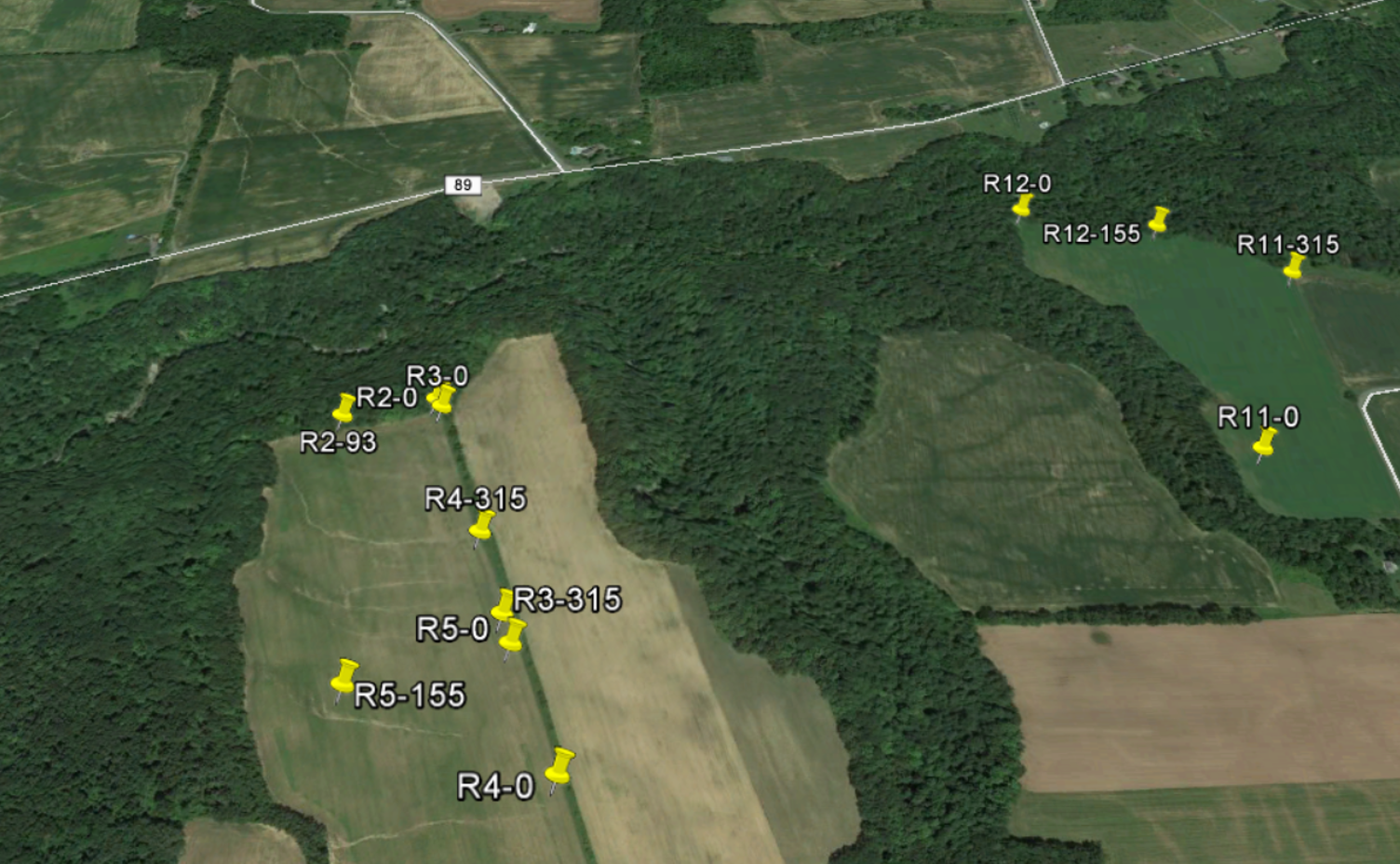|
Resistivity surveys were performed using an
MPT DAS-1 Electrical Resistivity Tomography
system in dipole-dipole array and had
electrode spacing ranging from 2 to 5
meters.
Combinations of 32 or 64 electrodes
were used for each survey.
No clear bedrock boundary was imaged
by the resistivity surveys despite close
proximity to an observed outcrop (R1).
However, boreholes data which
resulted in unexplained discontinuity of
clay layers was clearly imaged by the
resistivity surveys (R2).
Surveys employing 64 electrodes
resulted in very deep imaging of the
subsurface, illustrating the heterogeneity
of the glacial deposits (R11).
|

Map of the survey area
with endpoints of the surveys marked.
|